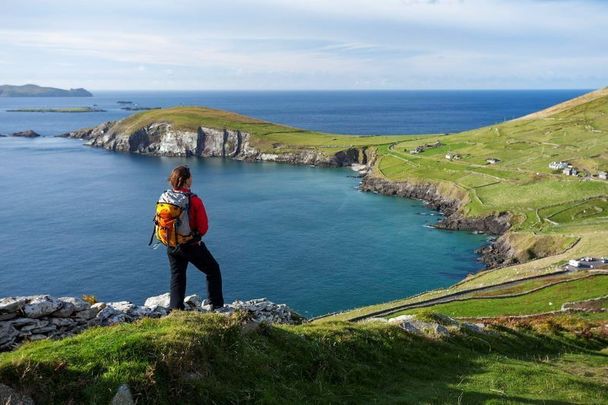A "lost" megalithic tomb that was believed to have been destroyed in the mid-19th century has been rediscovered on the Dingle Peninsula.
Altóir na Gréine (the Sun Altar), a megalithic tomb dating back around 4,000 years, was believed to have been destroyed during the 1840s when locals broke off its stones and used them for building materials.
A sketch of the tomb dating back to 1838 was a source of intrigue for archaeologists, but no known record of its location existed.
However, local man Billy Mag Fhloinn has successfully located the site of the megalithic tomb along with several large stones that were originally believed to have been removed from the site.
Mag Fhloinn told RTÉ News that he discovered several large upright stones known as orthostats in addition to a large capstone, which typically covers the top of megalithic tombs.
A "lost" 4,000-year-old tomb has been rediscovered on the Dingle Peninsula in Co Kerryhttps://t.co/b1hObDmXCP
— RTÉ News (@rtenews) January 18, 2024
He added that he found several other stones buried beneath the dense undergrowth.
Mac Fhloinn said the tomb is located on the crest of a hill overlooking the village of An Buailtín on the Dingle Peninsula.
"I knew there was a lost site of Altóir na Gréine on the hill somewhere. So I started to walk the hill in search of it, covering a large area. Eventually, these stones caught my eye. Then when I took a closer look I saw that the features on one of the stones perfectly matched an orthostat in the sketch from 1838," Mac Fhloinn told RTÉ News.
A sketch of the original intact tomb was taken by English woman Lady Chatterton during a visit to West Kerry in 1838. However, antiquarian Richard Hitchcock visited West Kerry in 1852 to inspect the tomb and reported that the monument no longer existed.
"The stones which composed it having been broken and carried away for building purposes as if there were no others in the neighborhood," Hitchcock wrote at the time.
Mag Fhloinn told RTÉ that he was fascinated by Lady Chatterton's sketch along with the tomb's connection to the sun in local folklore. He said he set about locating the tomb on the slopes of Cruach Mhárthain.
Mag Fhloinn added that the tomb appears to be a wedge tomb dating back to between 2,500 and 2,000 BC.
Wedge tombs are the youngest type of Stone Age monument found in Ireland and are the most common megalithic burial structure found on the Dingle Peninsula. Somewhat resembling portal dolmens, they are large stone boxes covered with a large roofing slab.
Mag Fhloinn said they are often found on high ground, although not at the highest point of a mountain or hill. He added that they often have certain alignments associated with them, stating that tombs often have an opening facing in a particular direction.
The recently discovered Sun Altar has an apparent northwest/southeast orientation and archaeologists will examine if it is aligned with the sun in any way. Further, a manuscript dating back to 1938 contains stories of the "eastern sun hitting the tomb at sunrise", giving rise to the possibility of a winter solstice alignment similar to that at Newgrange.
Mag Fhloinn added that wedge tombs usually hold cremated remains but said they have also been used for ceremonies and rituals.
"They may have cosmological and astronomical significance in the case where they are facing the setting sun in the west and southwest."
An archaeologist from the National Monument Service has inspected the site and has confirmed the accuracy of Mag Fhloinn's report, with the tomb now set to be added to the database of national monuments.
Caimin O’Brien, an archaeologist with the National Monument Service, told RTÉ that the recent discovery will help archaeologists better understand Ireland's wedge tomb distribution.
"The significance of the rediscovery of the wedge tomb is to bring it back into the archaeological record so that the archaeological community can study it," O'Brien told RTÉ News.
Altóir na Gréine will also be part of a deep-mapping project being carried out by Sacred Heart University, a US university that is visually recording burial tombs on the Dingle Peninsula and creating 3D models using photogrammetry.




Comments